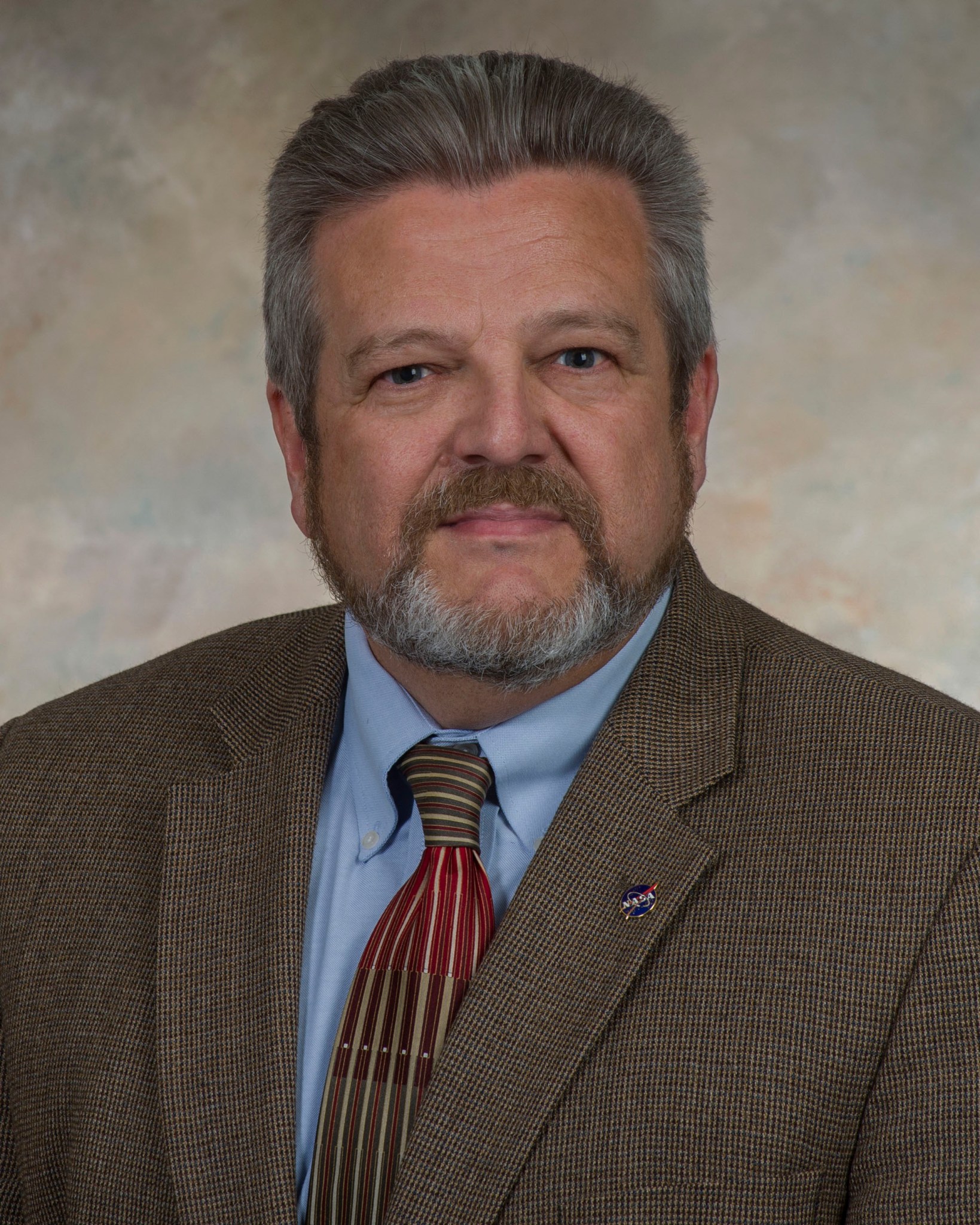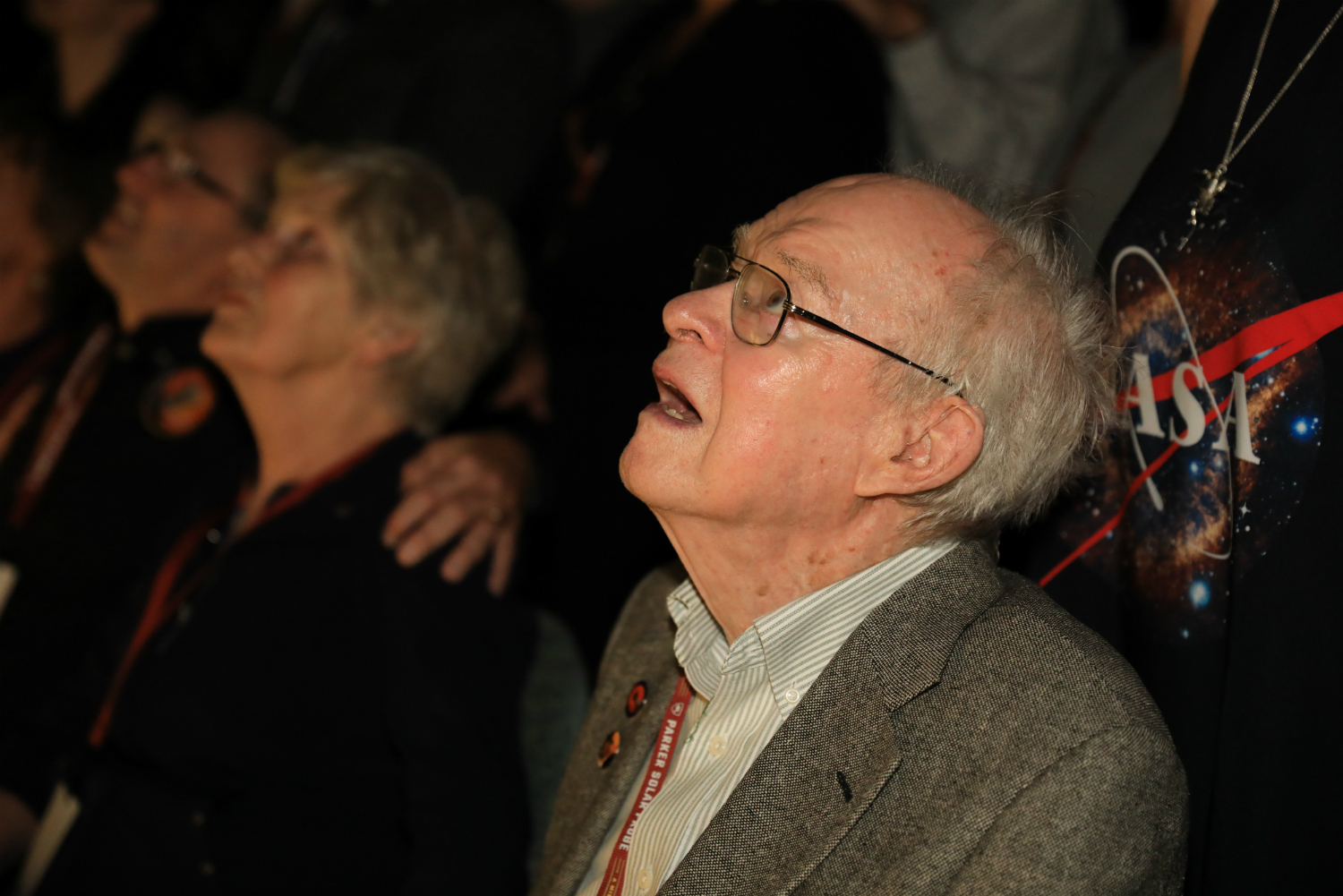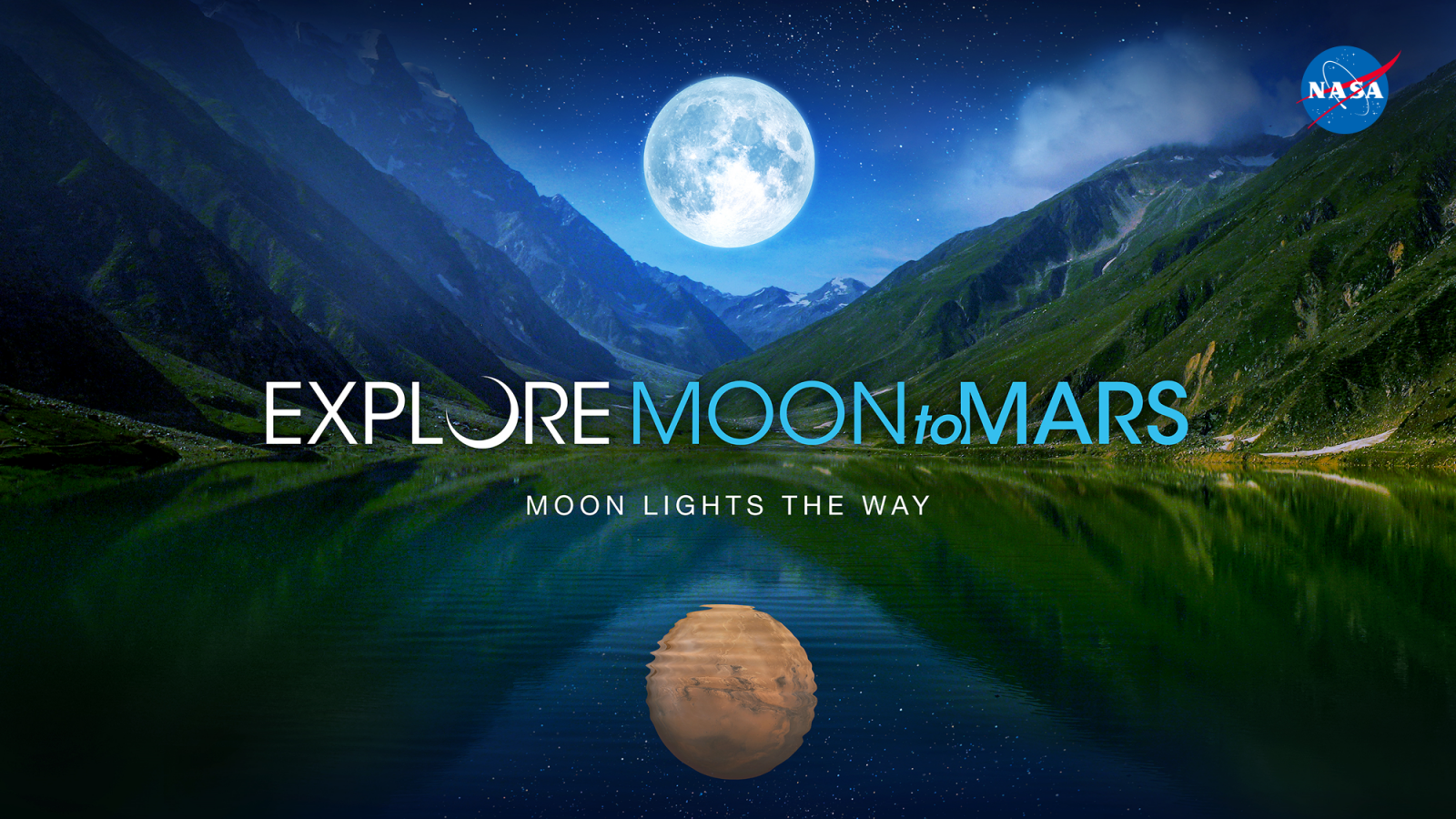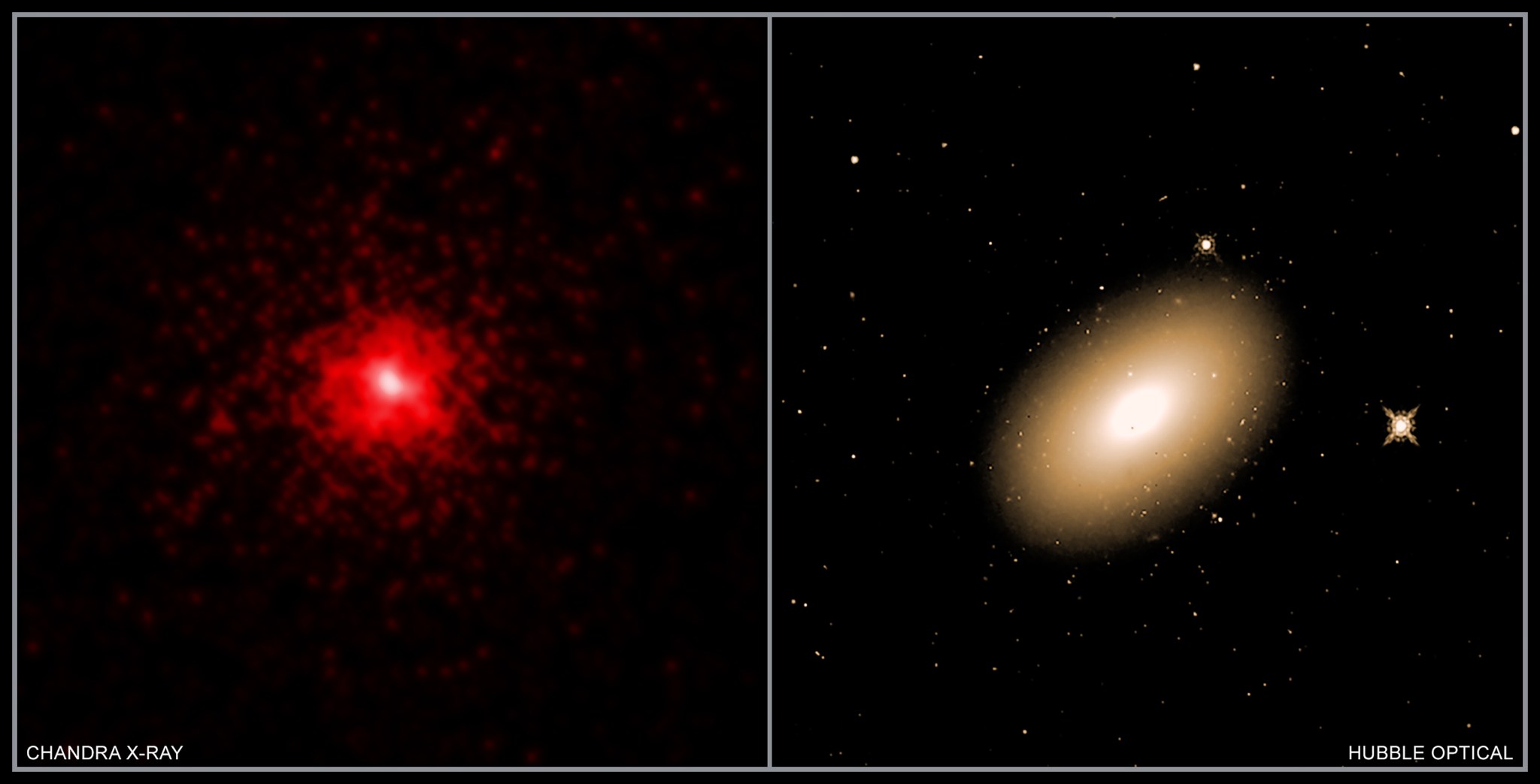In This Week’s Star
- Robert Champion Selected to Lead Michoud Assembly Facility
- Nelson Parker Named Associate Director, Technical for Marshall Engineering Directorate
- Rocket Science in 60 Seconds: What Makes NASA’s SLS Rocket So Unique?
- Get the Latest Moon to Mars Updates Delivered to Your Inbox
- FBI Section Chief Keri Farley to Speak at Marshall Pride Month Event
- UAH, Marshall Welcome ‘Tech Trek’ Students From Across Alabama
- Heart of Lonesome Galaxy Is Brimming With Dark Matter
- OSIRIS-REx Breaks Record, Highlighted on ‘This Week @NASA’
- This Week in NASA History: S-IVB-209 Successfully Static-Fires – June 20, 1967
Robert Champion Selected to Lead Michoud Assembly Facility
Robert Champion has been appointed director of NASA’s Michoud Assembly Facility, which is managed for the agency by NASA’s Marshall Space Flight Center.
Champion will oversee one of the largest manufacturing facilities in the world, where key elements of NASA’s Space Launch System and Orion spacecraft are being built. Michoud has an annual operating budget of $60 million and more than 2 million square feet of manufacturing space. The large tenant population of the 829-square-acre facility includes approximately 3,500 federal, state, academic and commercial industry employees.
Since joining Marshall in 1986 as a propulsion engineer in the former Preliminary Design Office, Champion has served in numerous leadership positions, including team lead for the design of the X-34 Main Propulsion Systems from 1994 to 1999, and lead for the Vehicle Propulsion Team from 1999 to 2000. In the latter role, he coordinated system design and analysis support for numerous spacecraft and rocket propulsion projects.
Champion was manager of Marshall’s Internal Relations and Communications Department from 2000 to 2001. From 2001 to 2003, he managed the Auxiliary Propulsion Project for the Next Generation Launch Vehicle Program, and from 2003 to 2004, he was NASA’s project manager for the Boeing Orbital Space Plane project. From 2004 to 2007, he was deputy manager, chief engineer, and technical manager in the Shuttle Propulsion Office’s Propulsion Systems Engineering and Integration Office. From 2007 to 2010, he was division chief of the Ares Upper Stage program’s Stage Systems Engineering and Integration Office. In 2010, he was appointed Michoud’s acting deputy director and chief operating officer.
In 2012, Champion was appointed to the Senior Executive Service as deputy director of Michoud. The Senior Executive Service is the personnel system covering top managerial positions in federal agencies. From 2014 through 2015, Champion was deputy of Marshall’s Space Systems Department; and from 2015 to 2019, he served as deputy director of Marshall’s Propulsion Systems Department.
Champion was awarded the NASA Exceptional Achievement Medal in 2011 for significant contributions to NASA’s mission; the NASA Medal for Exceptional Service in 2007 for technical leadership in space shuttle propulsion systems; the Space Flight Awareness award in 2006 for dedication to quality work and flight safety; and a 1998 Director’s Commendation for exceptional leadership of the X-34 Main Propulsion System product development team. He received the NASA Contracting Officers Technical Representative of the Year Award in 2003. Champion was selected in 2018 as an American Institute of Aeronautics and Astronautics Associate Fellow and received the 2018-2019 AIAA Holger Toftoy Award for outstanding technical management in the fields of aeronautics and astronautics.
Nelson Parker Named Associate Director, Technical for Marshall Engineering Directorate
Nelson Parker has been reassigned to the position of associate director, technical, for the Engineering Directorate at NASA’s Marshall Space Flight Center.
Parker will be responsible for planning, directing and coordinating engineering project management and integration activities in support of the directorate’s technical activities. He will represent the directorate at critical milestone reviews, boards and panels for programs and projects executed at Marshall.
Parker has made significant contributions to NASA’s science, space exploration and human spaceflight programs in his 44 years with the agency. He began his NASA career in 1975 as a mass properties engineer in Marshall’s Design Integration Branch within the Systems Analysis and Integration Laboratory, supporting integrated mission analysis and planning efforts for conceptual space shuttle payloads. He subsequently supported payload integration activities for dedicated shuttle missions, such as Spacelab 1 and Spacelab 3.
Parker has held multiple technical leadership positions within the Engineering Directorate, including lead systems engineer for the International Space Station U.S. Laboratory; team leader in the Design Integration Branch; branch chief of the Design Integration Branch; deputy chief of the Systems Integration Division; chief of the SAIL Technical Staff Office; assistant to the engineering director; and deputy manager of the Engineering Systems Department.
Parker was appointed to the Senior Executive Service in November 2002 as manager of the Engineering Systems Department. The Senior Executive Service is the personnel system covering top managerial positions in federal agencies. In 2004, he was named deputy manager of the Instrument and Payload Systems Department, which became the Space Systems Department in 2007. He took the position of deputy director for Program Assurance in the Safety & Mission Assurance Directorate in 2008, and was deputy manager of the Chief Engineer’s Office from September 2011 until his new assignment. Parker will continue as one of Marshall’s two ombudsmen.
Parker has been the recipient of a number of individual and group achievement awards, including the NASA Outstanding Leadership Medal, two NASA Exceptional Service Medals and the Marshall Director’s Commendation.
Rocket Science in 60 Seconds: What Makes NASA’s SLS Rocket So Unique?
Rocket Science in 60 Seconds gives you an inside look at work being done at NASA to explore deep space. Erika Alvarez is the lead systems engineer for NASA’s Space Launch System at Marshall Space Flight Center. In this episode, she explains the unique capabilities of the SLS rocket and how she works with other engineers to ensure the rocket can meet the unique requirements for each Artemis mission to the Moon.
Get the Latest Moon to Mars Updates Delivered to Your Inbox
NASA’s science, technology and human exploration activities touch every aspect of our lives here on Earth and will extend our presence to the farthest corners of the universe. Just as Apollo inspired a generation 50 years ago, NASA continues to inspire with feats of science and exploration today. Sign up for the Moon to Mars newsletter to get the latest Artemis program updates delivered to your inbox. (NASA)
FBI Section Chief Keri Farley to Speak at Marshall Pride Month Event
NASA’s Marshall Space Flight Center will host a Pride Month celebration June 26 to mark the 50th anniversary of the movement to ensure equal rights and protections for lesbian, gay, bisexual, transgender and queer Americans.
Keri Farley, section chief for the FBI’s Counterterrorism Internet Operations Section, will deliver a keynote address at 10 a.m. in Building 4200, Room P110. All Marshall team members are invited to attend.
LGBTQ Pride Month is celebrated each June to honor the 1969 Stonewall Uprising in Manhattan — a tipping point for the Gay Liberation Movement in the United States. Learn more here.
“Marshall remains committed to raising LGBTQ awareness, but more importantly, we are dedicated to enhancing opportunity and inclusiveness, moving from equality to equity for all LGBTQ employees,” said Loucious Hires, director of Marshall’s Office of Diversity and Equal Opportunity.
Farley began her career as a special agent in 2004, investigating national security matters from the FBI’s Boston field office. In 2007, she was transferred to the New York City field office where, in 2010, she was appointed as supervisory special agent overseeing New York’s first squad focused on terrorist use of the internet. Farley was assistant inspector and team leader of the FBI’s Inspection Division from 2014-2016, and led the Intelligence Branch in Charlotte, North Carolina, from 2016-2018. In 2018, she was tapped to lead the bureau’s Counterterrorism Human Intelligence Section.
A former lawyer and player for the U.S. National Handball Team, Farley received a bachelor’s degree in industrial labor relations from Cornell University in Ithaca, New York, in 1995, and a law degree from Emory University in Atlanta in 1998.
Contact Janet Washington in the Office of Diversity and Equal Opportunity for more information.
UAH, Marshall Welcome ‘Tech Trek’ Students From Across Alabama
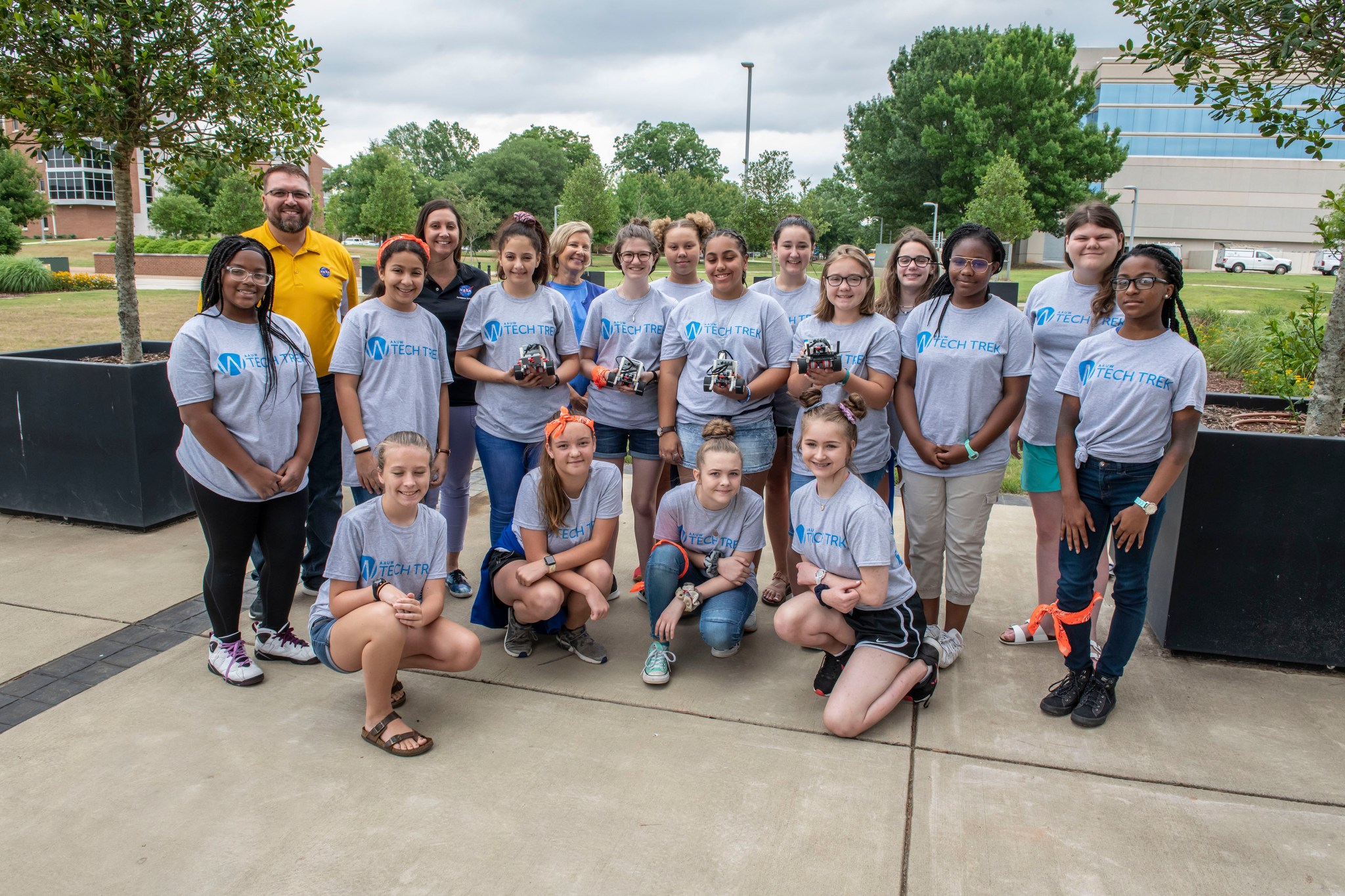
Eighth-grade girls from across Alabama tour the University of Alabama in Huntsville campus during Tech Trek 2019, held June 10-14 with support from NASA’s Marshall Space Flight Center. Tech Trek is an annual summer camp for middle school girls pursuing advanced STEM education classes — science, technology, engineering and mathematics. This year, 64 girls from schools from 20 Alabama counties were immersed in hands-on classes with university and NASA educators, tackling subjects as diverse as cybersecurity, robotics, genomics, app development and the science of sound waves. Participants are nominated by their teachers. (NASA/Fred Deaton)
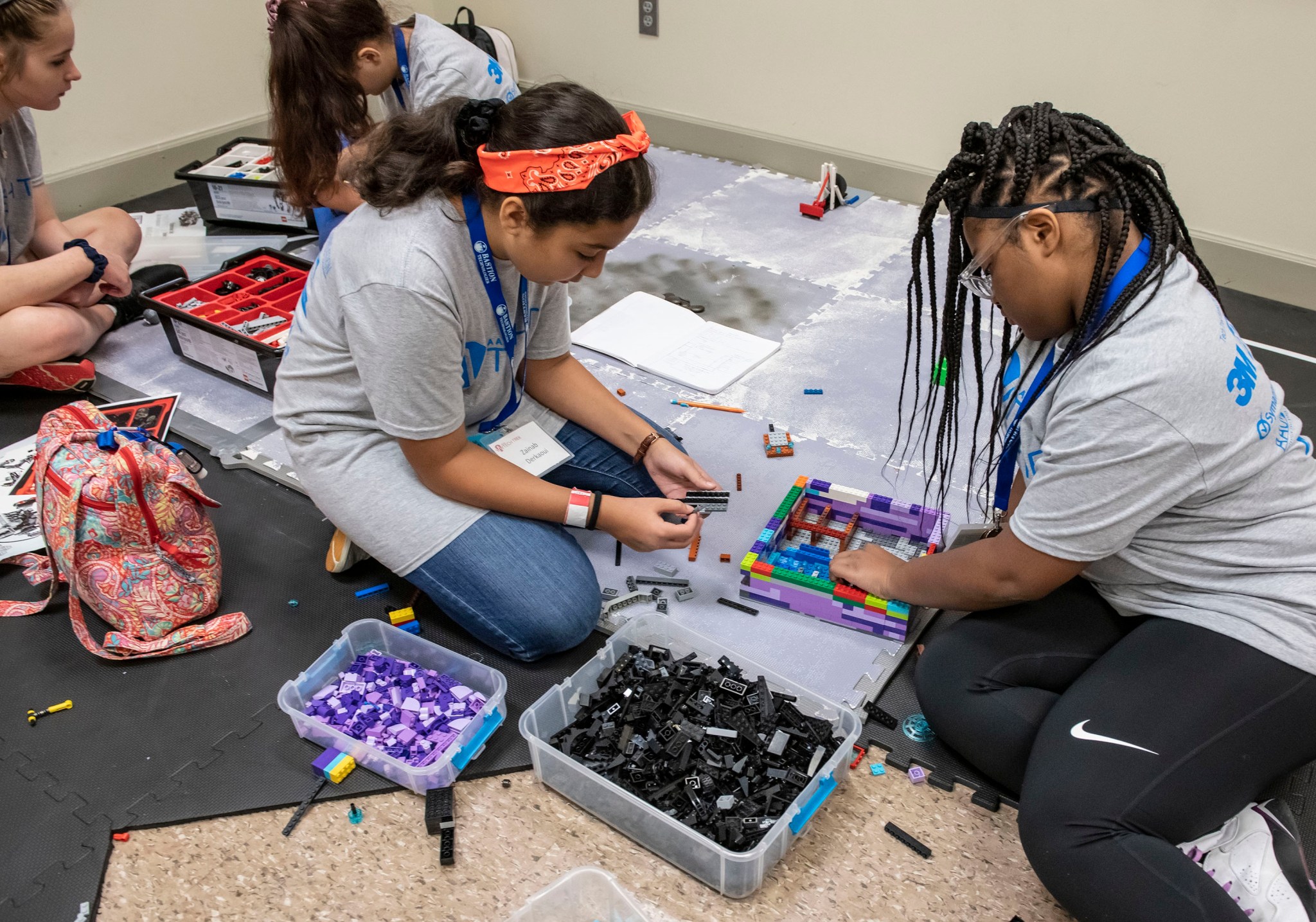
Tech Trek participants Zainab Derkaoui, left, of Hoover, Alabama, and Lauryn Robertson, of Mobile, Alabama, build a working lunar base camp using Lego bricks and programmable Lego Mindstorm EV3 robots. Exercises such as these help prepare today’s students to join NASA’s mission to return explorers to the Moon by 2024 and journey on to Mars in the years ahead. The robotics course, led by NASA engineers, tasks students to design a camp where robots can execute various tasks: establish a power supply, set up space-to-ground communications, retrieve food and supplies and search for water sources. Learn more about Tech Trek here. (NASA/Fred Deaton)
Heart of Lonesome Galaxy Is Brimming With Dark Matter
Isolated for billions of years, a galaxy with more dark matter packed into its core than expected has been identified by astronomers using data from NASA’s Chandra X-ray Observatory — a program managed by NASA’s Marshall Space Flight Center for the Science Mission Directorate.
The galaxy, known as Markarian 1216 — abbreviated as Mrk 1216 — contains stars that are within 10% the age of the universe. Scientists discovered that the galaxy has gone through a different evolution than typical galaxies, both in terms of its stars and the invisible dark matter that — through gravity — holds the galaxy together. Dark matter accounts for about 85% of the matter in the universe, although it has only been detected indirectly.
Mrk 1216 belongs to a family of elliptically shaped galaxies that are more densely packed with stars in their centers than most other galaxies. Astronomers think they descended from reddish, compact galaxies called “red nuggets” that formed about a billion years after the big bang but then stalled in their growth about 10 billion years ago.
If the explanation is correct, then the dark matter in Mrk 1216 and its galactic cousins should also be tightly packed. To test this idea, a pair of astronomers studied the X-ray brightness and temperature of hot gas at different distances from Mrk 1216’s center, so they could “weigh” how much dark matter exists in the middle of the galaxy.
“When we compared the Chandra data to our computer models, we found a much stronger concentration of dark matter was required than we find in other galaxies of similar total mass,” said David Buote of the University of California at Irvine. “This tells us the history of Mrk 1216 is very different from the typical galaxy. Essentially all of its stars and dark matter were assembled long ago with little added in the past 10 billion years.”
According to the new study, a halo, or fuzzy sphere, of dark matter formed around the center of Mrk 1216 about 3 or 4 billion years after the big bang. This halo is expected to have extended over a larger region than the stars in the galaxy. The formation of such a red nugget galaxy was typical for a wide range of elliptical galaxies seen today. However, unlike Mrk 1216, most giant elliptical galaxies continued to gradually grow in size when smaller galaxies merged with them over cosmic time.
Previously, astronomers estimated that the supermassive black hole in Mrk 1216 is more massive than expected for a galaxy of its mass. This most recent study, however, concluded that the black hole is likely to weigh less than about 4 billion times the mass of the Sun. That sounds like a lot, but it may not be unusually massive for a galaxy as large as Mrk 1216.
The authors also searched for signs of outbursts from the supermassive black hole in the center of the galaxy. They saw hints of cavities in the hot gas similar to those observed in other massive galaxies and galaxy clusters like Perseus, but more data are needed to confirm their presence.
The Mrk 1216 data also provide useful information about dark matter. Because dark matter has never been directly observed, some scientists question whether it exists. In the study, Buote and Barth interpreted the Chandra data using both standard, Newtonian models of gravity and an alternative theory known as modified Newtonian dynamics — “MOND” — designed to remove the need for dark matter in typical galaxies. The results showed that both theories of gravity required about the same extraordinary amount of dark matter in the center of Mrk 1216, effectively removing the need for the MOND explanation.
A paper describing these results appeared in the May 29 issue of The Astrophysical Journal and is available online.
Read more from NASA’s Chandra X-ray Observatory. View more Chandra images, multimedia and related materials.
The Smithsonian Astrophysical Observatory in Cambridge, Massachusetts, controls Chandra’s science and flight operations.
OSIRIS-REx Breaks Record, Highlighted on ‘This Week @NASA’
NASA’s OSIRIS-REx mission recently broke a record and is featured in “This Week @NASA,” a weekly video program broadcast on NASA-TV and posted online.
On June 12, the spacecraft performed another significant navigation maneuver and broke its own record for a spacecraft making the closest orbit of a planetary body. The maneuver began the mission’s new phase, known as Orbital B, and placed the spacecraft 680 meters — less than half a mile — above the surface of asteroid Bennu. The previous record was 1.3 kilometers (0.8 miles).
OSIRIS-REx is a project of the Science Mission Directorate’s New Horizons Program, managed by NASA’s Marshall Space Flight Center.
View this and previous episodes at “This Week @NASA” on NASA’s YouTube page.
This Week in NASA History: S-IVB-209 Successfully Static-Fires – June 20, 1967
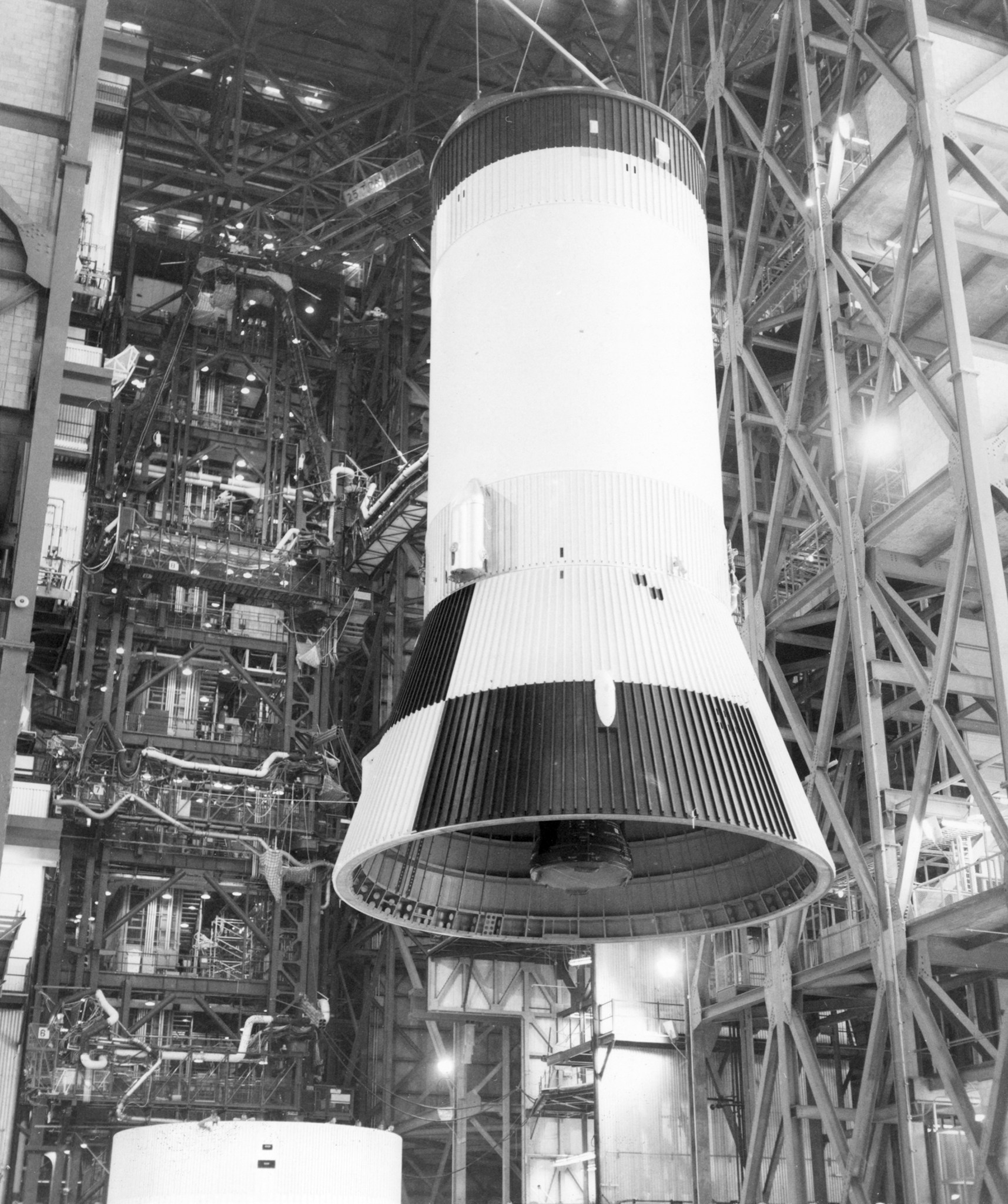
This week in 1967, the Saturn IB S-IVB-209 stage was successfully static-fired for a mainstage duration of 465 seconds in the Beta I test stand at Douglas Aircraft’s Sacramento Test Operations facility. The firing was terminated by liquid oxygen depletion cutoff as planned. The S-IVB stage was developed under the direction of NASA’s Marshall Space Flight Center and was powered by one J-2 engine capable of producing 225,000 pounds of thrust. Here, S-IVB-506, used on the Apollo 11 mission, is hoisted in the Vehicle Assembly Building at NASA’s Kennedy Space Center for mating with the S-II, or second, stage of the Saturn V rocket. Now through December 2022, NASA will mark the 50th anniversary of the Apollo Program that landed a dozen astronauts on the Moon between July 1969 and December 1972, and the first U.S. crewed mission — Apollo 8 — that circumnavigated the Moon in December 1968. The NASA History Program is responsible for generating, disseminating and preserving NASA’s remarkable history and providing a comprehensive understanding of the institutional, cultural, social, political, economic, technological and scientific aspects of NASA’s activities in aeronautics and space. For more pictures like this one and to connect to NASA’s history, visit the Marshall History Program’s webpage. (NASA)





























